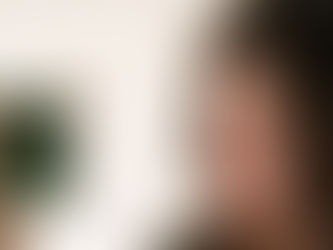Using a Secchi Disk | Spirulina Growing Blog
- Tom Vered
- Mar 7, 2022
- 3 min read
Updated: Aug 14, 2022
Secchi Disk is a measuring tool
That will help you measure the density of your Spirulina. It is a 10 cm ruler with a white stripe at the end. To measure, lower the ruler, so it is perpendicular to the water. When the white stripe is no longer visible, stop and look at the number on the waterline. The lower the number, the more Spirulina there is in the water.
How To Start Your Own Spirulina Culture Using a Secchi disc
As soon as you receive the Spirulina, open the lid on the bottle, and let the culture breathe! Afterward, let it rest for a day or two. While it rests, make sure the top of the bottle is covered with fabric to enable the Spirulina to breathe and discourage contaminants. It's beneficial to run your air tube into the bottle or swirl the bottle multiple times a day. Place your bottle in either bright indirect light or cover the bottle with thin white fabric if in sunlight. Spirulina loves sunlight, but not when stressed.
Measure the density of your Spirulina before growing it. As explained previously, measure it using the Secchi disc. It should have a density of 4 cm or less (3cm or 2cm are best) before adding an additional growing medium. If it is not yet this dense, let your bottle rest and begin the growing process when it reaches this density. If you receive a bottle almost clear or yellowish, something is wrong. Get a new culture.
Growing your culture is easy. The basic concept is that when your culture gets dense enough, you double the amount of medium and let it grow. You begin with five (5) liters of growing medium or a bit less.
The first time you add your culture into the tank; however, you will more than double the medium to maximize Spirulina growth. This stage will take longer than other similar stages, and, initially, you should be extra careful. If you have one (1) liter of Spirulina at the density of 4 Secchi or less, mix up to five (5) liters of growing medium using the Mixing chart as a reference for the number of nutrients to add. Before adding the culture, check that your heater can be fully immersed in the water tank and let the heater warm the water before adding the live Spirulina. If the water is too cold, it can hurt the little guys. Then, pour the medium into your tank.
If your tank is too large for the heater to be in the water, you may have to perform the initial step in a different container. To ensure the tubing is placed correctly, turn on the air pump. Bubbles should be floating up along the walls of the tank. You are now ready to add your Spirulina! We recommend maintaining an extra live culture to the side as a safety precaution if anything goes wrong. It is ok for it to be in the bottle without bubbling air. Just swirl it once a day while you grow the rest in your tank.
Once you have poured in the Spirulina, cover the tank with your tank cover. If the Secchi is less than 6, then cover everything with a thin white fabric. Very thin Spirulina in the growing medium is a sign of stress, and the Spirulina needs to be protected from direct sunlight. Every time you double the medium, you must check the Secchi measurement. If it is below 6, you will continue to cover the Spirulina during the first days. As the density grows thicker and thicker and it reaches a number lower than 6 Secchi (for example, 5, 4, or 3), you can expose it to full sunlight. Monitor the temperature closely, especially during the hottest part of the day. You can check the pH. It should start around 8.5 and slowly rise as the day advances.
Encourage the little guys to grow by talking to them or just spending some time with them each day. This stage will take longer than any other stage, even several weeks, so be patient.
Use a permanent marker to mark the water level on the side of the tank. During these stages, the water evaporates more quickly than usual. As the water level goes down, add more filtered water to bring the level to the mark. As you are merely replacing evaporated water, you need not add any nutrients. You will perform the same process at each stage of culture growth.








Comments